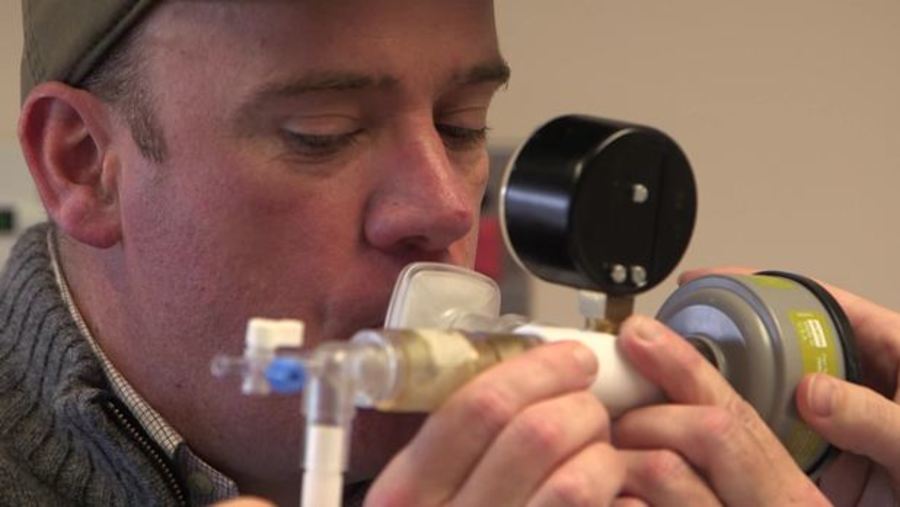Library Catalog
On the Shelf at CCBC Libraries
-
Clark's Essential Physics in Imaging for Radiographers by It is essential that any practitioner working in an imaging department and using ionizing radiation has a sound knowledge base. In order to understand the various factors affecting the production of diagnostic images, practitioners must demonstrate a grasp of the fundamental definitions of physics and how these principles may be applied to radiography. The easy-to-understand, portable format of Clark¿s Essential Physics in Imaging for Radiographers makes it an invaluable tool for students, assistant practitioners, and radiographers. The book opens with chapters providing an overview of image production, basic mathematics, and physics relevant to medical imaging, which are followed by detailed chapters on physics relevant to producing diagnostic images using x-rays. Each chapter features clear learning objectives and a series of multiple choice questions to test these learning outcomes, and diagrams and photographs support the text.
Call Number: RC78.15 H65 2014 -
Introduction to Biological Physics for the Health and Life Sciences by This book aims to demystify fundamental biophysics for students in the health and biosciences required to study physics and to understand the mechanistic behaviour of biosystems. The text is well supplemented by worked conceptual examples that will constitute the main source for the students, while combining conceptual examples and practice problems with more quantitative examples and recent technological advances.
Call Number: QH505 .I68 2010 -
Diagnostic Ultrasound by All healthcare professionals practising ultrasound in a clinical setting should receive accredited training in the principles and practice of ultrasound scanning. This second edition of Diagnostic Ultrasound: Physics and Equipment provides a comprehensive introduction to the physics, technology and safety of ultrasound equipment, with high quality ultrasound images and diagrams throughout. It covers all aspects of the field at a level intended to meet the requirements of UK sonography courses. New to this edition: * Updated descriptions of ultrasound technology, quality assurance and safety. * Additional chapters dedicated to 3D ultrasound, contrast agents and elastography. * New glossary containing definitions of over 500 terms. The editors and contributing authors are all authorities in their areas, with contributions to the scientific and professional development of ultrasound at national and international level.
Call Number: RC78.7.U4 D516 2010
Streaming Video
-
Diagnosing Heart Disease With A BreathalyzePulmonary specialists are working with NASA engineers to see what your "breath print" says about your overall health.
Associations
-
American Association of Physicists in Medicine (AAPM)AAPM is a scientific and professional organization, founded in 1958, composed of more than 8000 scientists whose clinical practice is dedicated to ensuring accuracy, safety and quality in the use of radiation in medical procedures such as medical imaging and radiation therapy.
Databases
-
Biological Science Database

Articles on biology topics.
Online From CCBC Libraries
-
Radiography in the Digital Age by This 3rd edition of Radiography in the Digital Age was peer-reviewed by five colleagues who brought many valuable corrections and improvements to the text. The entire textbook has been converted to metric units, and to Systeme International (SI) units for radiation biology and protection. This was done to make it more usable for an international community of educators, and to align with the American Registry of Radiologic Technologists' adoption of SI units in 2016. The ability of digital processing not only to generally compensate for scatter radiation, but to correct specific fog patterns in the image is more fully explained. Many crisp illustrations have been added, along with helpful tables and refinements to the text designed to make the entire presentation more student-friendly. Remarkable clarity and concise descriptions help the student with more complicated topics, especially in the digital domain. The practical limitations of digital features such as smoothing and edge enhancement are covered with their direct implications for clinical application. Several sections have been deleted, moved or reorganized to provide smoother transitions and development of the topics, with particular focus on the digital imaging chapters. Material on rescaling the digital image has been greatly strengthened, and new graphs have been added that make histogram analysis and errors mush easier to grasp. The comprehensiveness and detailed presentation of this book will deepen the collective conversation, challenge thinking, and give up-to-date tools that may be used today.
Publication Date: 2018 -
Physics in Biology and Medicine by Physics in Biology and Medicine, Third Edition covers topics in physics as they apply to the life sciences, specifically medicine, physiology, nursing, and other applied health fields. This concise introductory paperback surveys and relates basic physics to living systems. It discusses biological systems that can be analyzed quantitatively, and how advances in the life sciences have been aided by the knowledge of physical or engineering analysis techniques. This text is designed for premed students, doctors, nurses, physiologists, or other applied health workers, and other individuals who wish to understand the nature of the mechanics of our bodies.
Publication Date: 2007 -
Physics and Biology by Do you often lose your keys? You will find in this book the best strategy to find them, or at least the one deduced from statistical physics. What is the link with biology? Some proteins use the same strategy to find their target inside a living cell. This example illustrates one of the many links between physics and biology. These links result from an intense research activity in the past years at the interface between those two disciplines. This book describes some of the most recent progresses at this interface: from instrumental progresses used in biology to the mechanical description of a cell, to molecular motors, from brain activity mechanisms to auditory or sensory perception. Many fields are covered from the molecular to the scale at the organ level. A few biological notions are exposed in the first chapter that may help to access the biological aspects of the others. In the end this book may interest people passionate in science, from the simple amateur to the advanced researcher level.
Publication Date: 2014
